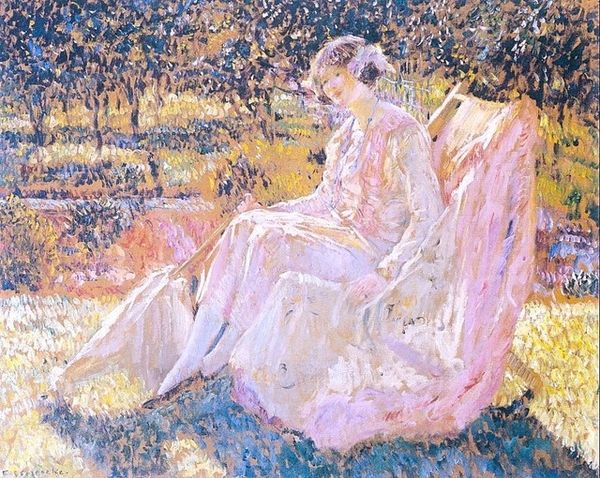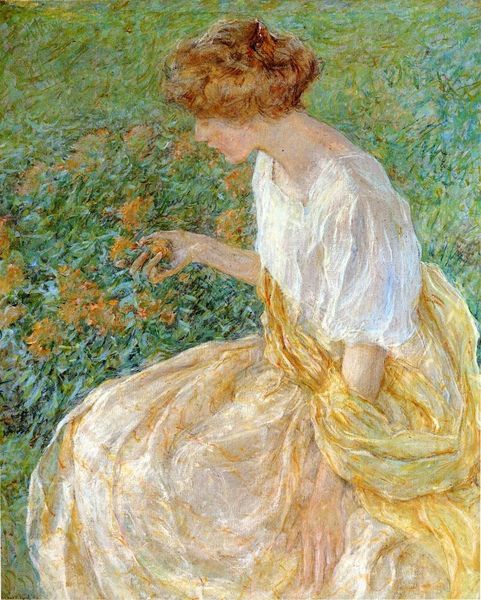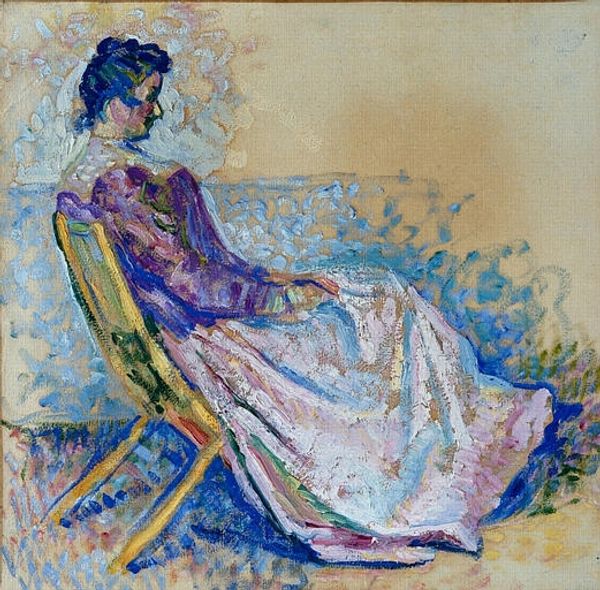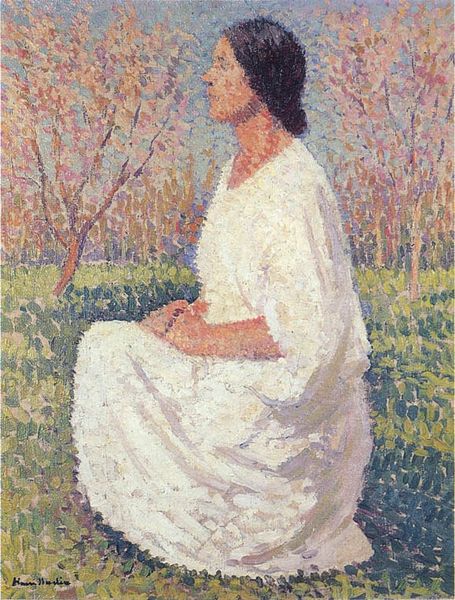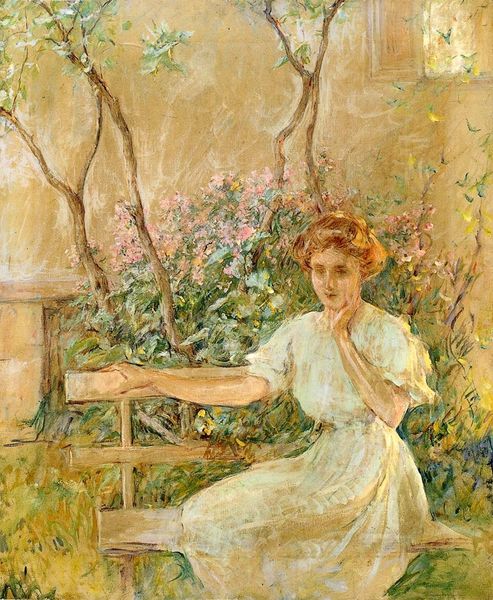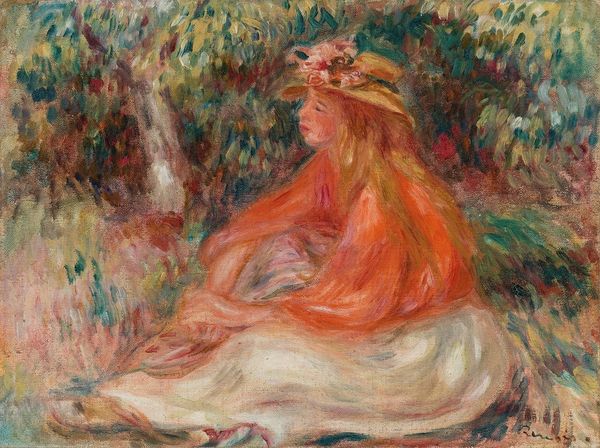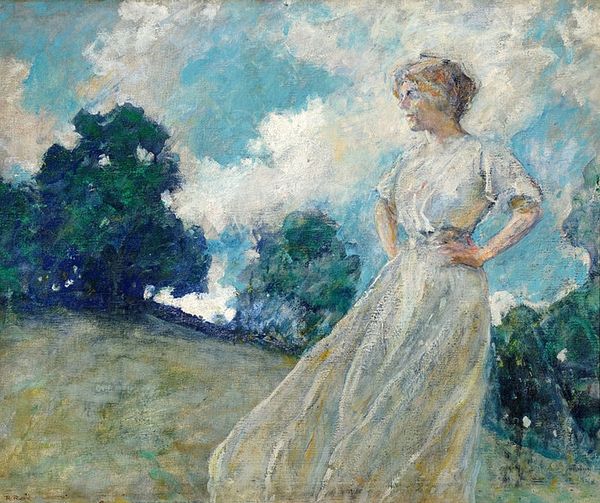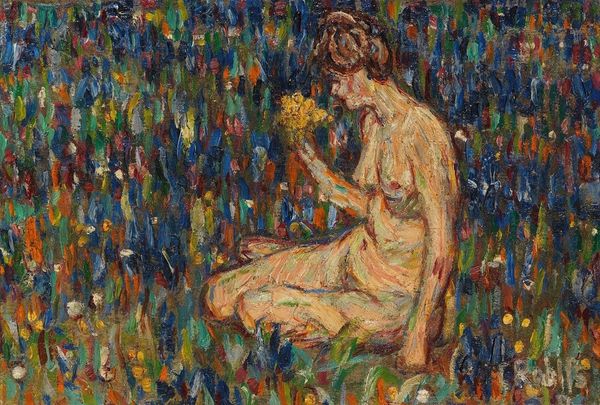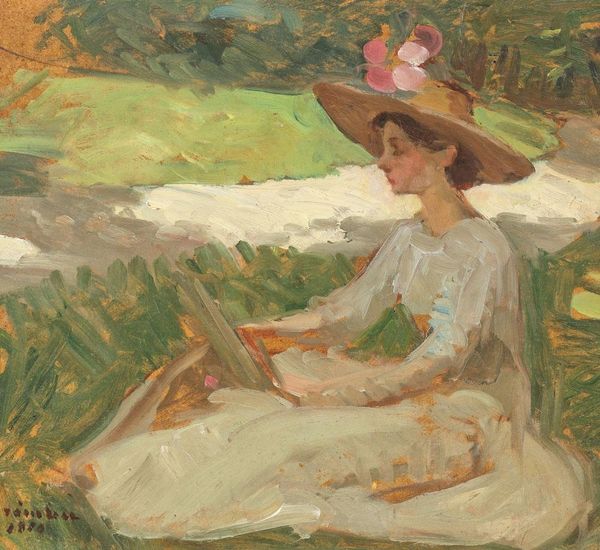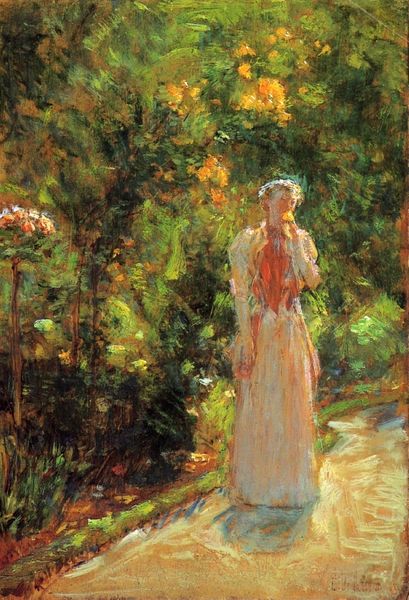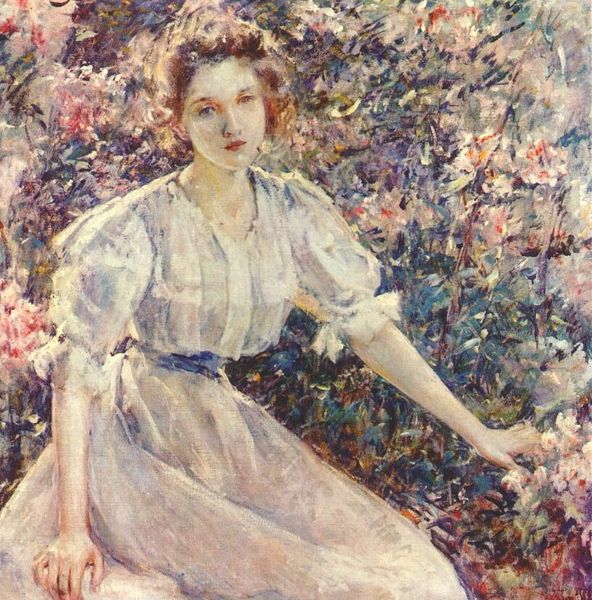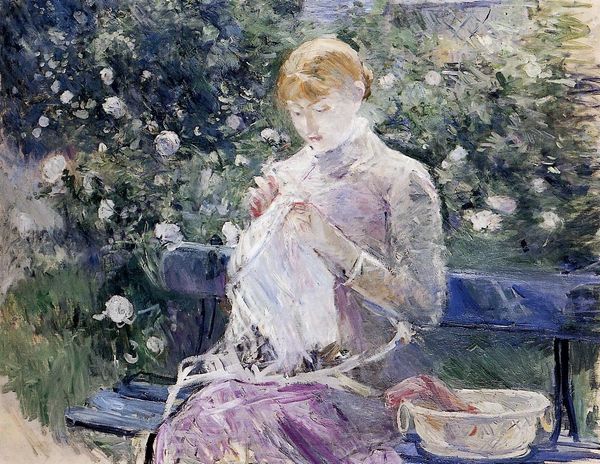
Copyright: Public Domain: Artvee
Curator: What strikes me first about Frederick Carl Frieseke’s “Sunbath,” believed to have been created between 1908 and 1918, is how thoroughly textile is integrated as both subject and structure for composition. The folds of fabric comprising a woman's gown blend seamlessly into those covering the sun-drenched chaise in a chromatic merging that seems both calculated and chaotic. Editor: Indeed, chaos resolves through a deliberate interplay of repeated visual motifs. Consider how the circular floral designs on her dress subtly mirror both the blooms scattered within the surrounding green landscape and dappled light refracted from foliage overhead. Light becomes an essential symbolic element, uniting both form and landscape, perhaps speaking to ideas of earthly paradise or feminine idyll. Curator: Yes, and that interplay extends into Frieseke’s materials and methodology as well. One has to imagine him working en plein air; that the handling of the oil paint, the density and build-up, would not have allowed much adjustment afterward. He would’ve contended with real-time elements—changing light, the weight of material in his hands, the physical limits to time and motion of his work. Editor: So, light serves as a metaphor while his style advances impressionism's agenda by merging with subject, yet what do the objects themselves mean? A fashionable woman rests amidst carefully cultivated nature, adorned in symbolic, almost archetypal florals. She presents an embodiment of leisure, suggesting freedom from labor. Curator: Precisely. That freedom itself speaks volumes. The means of production, the accessibility of resources to procure fabric, dyes, time itself—all of that implies very particular circumstances and conditions. It’s worth asking too: where and how this material object might have been displayed. The gallery system has long mediated the interpretation of leisure as a site of symbolic display. Editor: An apt point. I am still compelled by this repeated motif, not merely the blossoms, but the visual motif itself acts a symbol too. The cyclical nature inherent becomes its own allegory. In essence, it speaks to broader themes of growth, fruition, and potentially, feminine creativity. Curator: Indeed. Ultimately, it compels us to examine the artifice involved in constructing our notions of pleasure and leisure; how what may at first appear natural instead represents complex historical and material forces at play. Editor: Which invites questions of enduring archetypes—do Edenic representations such as these reflect a timeless aspiration, or a construction we might reinterpret anew, aware of history's persistent biases and blind spots?
Comments
No comments
Be the first to comment and join the conversation on the ultimate creative platform.
